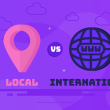Online marketing has various forms, and influencer marketing is one of them. It has been trending for a while now, and netizens engage with this type of marketing on a daily basis. This ever-evolving marketing strategy builds a relationship between influential individuals and their devoted online followers.
Social media has become an integral part of our daily lives, and influencer marketing is the key to harnessing the power of personalities who impact expansive audiences. Let’s delve into the types and benefits influencer marketing offers and how you can increase brand awareness by utilizing its strategies.
What is Influencer Marketing?

An influencer is like a famous person who creates content and has many followers who value their opinion. Influencer marketing is when you use the popularity and trust people have in these influencers to help promote your brand. This is done by paying them to talk about and recommend your product. When you team up with influencers, you can reach a group of potential customers interested in your product. Let’s take a look at some statistics that show how influencer marketing has affected branding strategies:
- Influencer marketing has shown a 29% increase in 2023 as compared to the previous year.
- For every $1 a business spends on influencer marketing, they earn 5.2$ in return.
- The searches for influencer marketing on Google alone have crossed 465% since 2016.
- 90% of survey participants value influencer marketing as an effective way of promotion.
- Instagram is the chosen platform for 67% of brands when it comes to influencer marketing.
Types of Influencer Marketing
There are various types of campaigns that brands can choose to promote their products or services through influencer marketing. Some of the most common types are as follows:
- Social Media Takeover: You can utilize this type to grow your followers on social networking sites. It has its risks, as a brand has to allow an influencer to operate its account and manage its profile for an agreed period of time.
- Affiliate Marketing: This type is more cost-effective and risk-free to generate leads. Brands just have to pay the influencers for each customer they bring from their account or website. Moreover, affiliate marketing isn’t as time-consuming as other types of marketing.
- Sponsored Content: Instagram is the go-to source for this type of marketing. Brands only have to pay the influencers for publishing a promotional post on their account. The influencers are responsible for creating content according to the client’s requirements and bringing in customers.
- Unboxings: Brands often send presents to influencers in the hope of getting a positive review from them on their accounts. It is an affordable way of marketing if compared to the fees that influencers charge for advertising. Negative reviews or not reviewing your product at all are some risks associated with this type of marketing.
Best Hosting Solutions For An Even Better Marketing
With the best hosting solutions from UltaHost, exploit the full potential of Influencer marketing. Select from a plethora of our managed e-commerce hosting solutions with unlimited bandwidth and promote your brand to a wider audience.
Types of Influencers
There are all types of influencers having either a broad reach or a smaller but targeted following. Brands can choose the type of influencer according to the reach, range, cost, and engagement of their product needs. The four types of influencers are:
- Mega or celebrity influencers: Influencers with a large following of over 1 million are included in this category. They can be renowned actors, musicians, athletes, or any other public figures. Cristiano Ronaldo can be considered a prime example for this category as he is well-suited for expansive brand awareness initiatives and engages a diverse audience.
- Macro-influencers: Macro-influencers have followers ranging from 100,000 to 1 million. They are niche experts who’ve built their reputation through consistent content creation and engagement. They’re more specific than celebrities, connecting with followers with common interests. Lastly, connecting with them can expand your brand’s reach, but the costs may vary based on your budget.
- Micro-influencers: Micro-influencers have followers ranging from 10,000 to 100,000. They excel on platforms like Instagram, YouTube, and TikTok. Marketers are inclined to them for their niche appeal, creative content, relatable suggestions, and genuine connections with a passionate audience. Studies reveal they boast a 60% higher engagement rate and can boost brand conversions by 20% as compared to macro influencers.
- Nano-influencers: Nano-influencers have less than 10,000 followers but can build strong bonds through personable content and authentic engagement. Despite having a smaller reach, they make great partners for businesses targeting specific communities and demographics with affordable costs.
Influencer Marketing Benefits
Influencer marketing proves to be effective for improving your marketing strategy, cutting down expenses, and reaching business goals. Influencer marketing platforms can help you connect with influencers, manage your campaigns, and measure their effectiveness. Let’s find the benefits that influencer marketing has for your brand.
Brand Awareness Growth
40% of marketers use influencer marketing to make more people know about their brand, and it works well. Influential people tell their followers about your brand’s story, mission, and values. This helps your brand reach and position itself better online.
Content Strategy Enrichment
Influencer marketing is a great chance to make your social media posts more interesting. You can share the influencer’s content or ask their followers to create content, as 24% of brands do. You can also use the influencer’s pictures for other ads. Make sure to talk about copyright in the agreement to avoid any issues.
Quality Lead Generation
36% of brands use influencer marketing to get more potential customers. 72% think it brings better-quality potential customers compared to other ways. People usually like the brands their favorite blogger talks about. Certain content, like reviews, can attract more interested customers in the middle stages of the sales funnel.
Cost-effectiveness
Other ways of marketing need constant money from your budget, but influencer marketing is a type of one-time investment. For example, to show your brand in search engine ads, you have to keep adding money to your advertising account. If not, your ad vanishes from the search results. A smart influencer marketing plan can give good results with lower costs or even let you trade something in return later on.
Influencer Marketing Strategies

Choosing the type of influencer marketing is the first step to marketing your brand. To make your influencer marketing strategy work, follow the step-by-step guide below.
Define Your Target Audience
Identifying your target audience is the first thing to manage for effective promotion. Understand their characteristics, preferences, and behaviors. For new customers, ask questions about demographics, funnel stage, interests, and behaviors.
Collect this data into customer profiles for easy reference. Use the jobs-to-be-done approach on social networks, as 43% of people research products on social media before purchasing.
Set Goals and KPIs
Similar to other promotional efforts, influencer marketing serves diverse goals, necessitating a clear objective setting. Define key performance indicators (KPIs) to measure success, such as total outreach, engagement, website traffic, search interest, and media mentions for brand awareness.
Use KPIs like purchases, registrations, app downloads, and email signups with the best email hosting for sales-focused campaigns. Also, avoid conflicting goals for one piece of content to maintain user clarity and optimize conversion rates.
Find The Right Channel
Some social media strategies might work for a specific social media platform, such as Instagram. It is believed to be best suited for effective influencer marketing. However, this is not the case when it comes to business promotion.
The target audience and the business goals should be in focus when choosing a channel for marketing your service. For a B2B business, LinkedIn would be the perfect choice as it has 630 million professionals and 90 million senior-level influencers.
Determine your Campaign Budget
Determining your campaign’s outreach relies on your budget, with influencers charging based on follower count, market rates, and advertiser interests. In addition to the influencer’s fee, you also need to have affordable SEO hosting to make sure your campaign reaches a wider audience.
If you are on a tighter budget, consider smaller opinion leaders for cost-effective results. Test influencer marketing’s effectiveness with nano- and micro-influencers. You can readjust goals and KPIs based on available resources when initiating your campaign according to your budget.
Pick the Right Influencers
Selecting the right influencer is the most important part of the success of an influencer marketing strategy. Choose influencers who align with your brand’s values. If we talk about promoting sustainable fashion, it should be done through influencers who talk about or have a zero-waste policy.
Be wary of scams and fake followers by checking for bots, requesting engagement statistics, and ensuring account authenticity. Choosing the right influencer can be exhausting, but you can do it manually if you have a limited list of opinion leaders.
Set Up the Campaign
Content creation is typically the influencer’s responsibility, but communicating your campaign expectations clearly is vital for success. You can craft a campaign brief with details like the chosen platform, campaign goals, and also messaging points.
Additionally, create a contract covering campaign specifics, participant duties, content ownership, deadlines, outcomes, and guarantees. Ensure the best web hosting for your brand advertisement, adhering to FTC guidelines to prevent deceptive advertising.
How to do Influencer Marketing?
Success in influencer marketing depends on a thoughtful and well-executed approach. Begin by organizing your strategy, planning thoroughly, and setting a budget. Dedicate time to research, considering different ways to find influencers through organic discovery, platform subscriptions, or agency collaboration.
Be patient and have a human-centric perspective. Remember, it’s people engaging with people, not just companies talking to companies. Moreover, develop a schedule that aligns with the influencer’s preferences, be it monthly, quarterly, or biannual calls or through newsletters. Integrate this schedule seamlessly with your PR and product release calendars.
Additionally, personalized communication adds a touch of authenticity. Sending emails and aligning travel schedules for face-to-face meetings contribute to building meaningful influencer relationships. Incorporating these elements into your influencer marketing strategy will pave the way for a more effective and authentic brand collaboration.
Conclusion
Influencers have changed the way marketing is done now. It is getting more recognition as compared to other types of marketing. While the basic steps of building a campaign are the same, such as researching, setting a budget, and determining goals, only working with influencers requires a unique approach. Once you’ve gotten a good grasp on this, you can boost your brand awareness in no time.
Affiliate marketing is the type of influencer marketing that generates leads without any risks. To attract more new leads, join the Ulta Affiliate Program by UltaHost and earn at least 60% from every sale. Join an affiliate program that values your partnership.
FAQ
How do I find a good influencer for my brand?
When shortlisting influencers for your promotional purposes, look out for active and consistent influencers that align with your brand’s requirements.
Why use influencer marketing?
According to research, traditional marketing is not trusted as much as influencer marketing. Influencer marketing fits perfectly to promote your brand and get loyal customers.
What is the best influencer marketing platform?
Most brands approach Instagram influencers to promote their products, but it is not a one-size-fits-all platform. Choosing the best platform for your brand’s promotion depends on the nature of your brand.
What is the best influencer strategy?
To make influencer marketing successful, brands and influencers should work together to create content. Don’t rely only on the influencer or the brand; use the strengths of both to make content that helps both sides.










